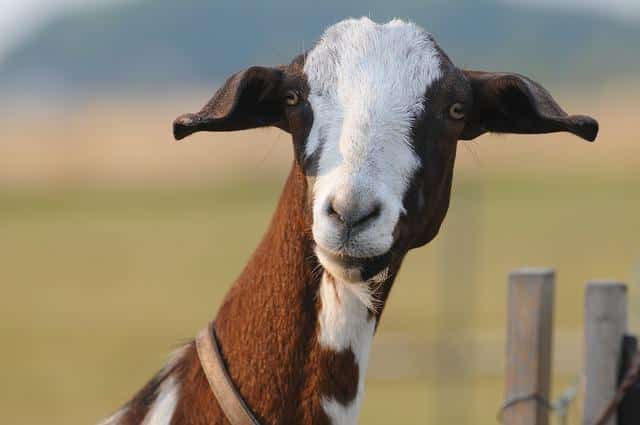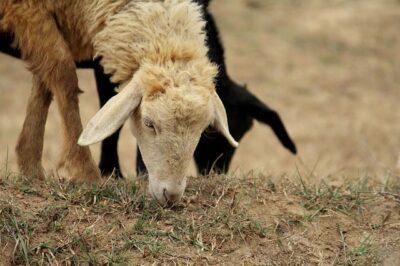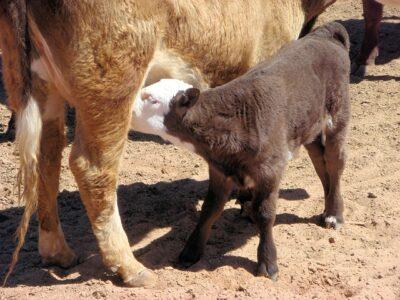Twenty-first century homesteaders have the advantage of being able to pick and choose between ancient practices and modern technology, selecting the one that works best in every situation. At my place, I love old-fashioned methods, but not when it comes to biosecurity.
I get some startled looks when I say the word “biosecurity” out loud to farm visitors. It sounds a little scary, like a scene from a sci-fi movie with people running around in crisp white hazmat suits. While biosecurity may or may not look a little like that on huge corporate agriculture farms, that is not how it is on my small sustainable farm. However, it is every bit as important here.
I learned about biosecurity the hard way. I purchased two registered heritage breed goat kids one spring and did not quarantine them before putting them in with my existing herd. Later that year when a college class conducted an animal health workshop in my barn, the professor expressed concern about one of the young does. She took fecal samples to examine back in her office, and called me the next day with the results. The animal was loaded with barber pole worms, she told me.
I had no choice but to embark upon a steep learning curve. Just as I was beginning to acquire the knowledge and skills I needed in order to take biosecurity seriously myself, a big dose of similar reality landed on the doorstep of a neighbor. Symptoms, fecal samples, and vet visits revealed the words no owner of small ruminants ever wants to hear out loud. Caseous Lymphadenitis.
“No,” I half-whispered when she told me. “Not CL.” A disease that is highly communicable and can mean a death sentence for much of the herd, it is said to sometimes remain onsite even after the animals are gone. Nobody wants that.
Diatomaceous Earth: The All-Natural Livestock De-Wormer!
When it comes to livestock diseases and parasites, complacency is not a friend of the homesteader.
Protecting yourself and your animals is crucial. It is also imperative to avoid infecting other homesteads. Although I am not a livestock health care professional, I do have a few tips that may help other owners create and maintain a barrier to keep animals healthy.
1. Boot wash. This is one of the most effective preventions you can do, and one of the easiest and least expensive.
I use a black rubber feed dish, a wide shallow model that sells for very little money at most feed stores. In it, I place a gallon of cool-to-tepid water, and a cup of household bleach. This is a very strong solution, more potent than I would use elsewhere. I also provide a long-handled utility brush. Both the dish and brush are dedicated to this purpose only.
Bleach solution does not maintain its efficacy for long. If visitors are not arriving until later, I set the supplies outside in the shade and mix the solution once they arrive. The liquid is about an inch deep in the feed dish, adequate for reaching organisms on the bottom of most farm boots. I ask folks to step one foot into the dish at a time, dunk the brush, and use it as needed in crevices of boot soles.
2. Shoe coverings. If people show up in sandals or dress shoes, they will not want to dunk their feet in an inch of bleach water. I do not blame them—I would not want to either! In cases where boot wash is impracticable, I offer plastic grocery store bags as coverings. They are easy to slid over footwear and can be tucked down into the tops of shoes or secured with a gear tie or little piece of duct tape.
3. Hand washing. Preventing transmission of disease in animals is similar to doing so in humans, in that washing between contacts makes a difference. I happen to have a barn spigot in summer and a utility sink conveniently located just inside my back door the rest of the year. Other options could include rigging a handwash station using a garden hose, or an old-fashioned bowl and pitcher if needed. Antibacterial products can be used, as well.
4. Screening. If I know that someone just came from a barn full of animals infected with Johne’s Disease, I really might secretly wish I had that hazmat suit. But in reality, I will ask the person to take extra care at my place. Farmers and homesteaders are generally honorable and genuine folks who will readily disclose where they have been and do whatever it takes to avoid transmitting infection. But they are also people with plates so full that they might not think to take precautions unless asked. Screening visitors amounts simply to asking the questions.
5. Commercial products. There are many choices on the market, from disposable boot covers to convenient boot-brush setups to many other types of disinfectant.
Be Prepared! Store An ‘Emergency Seed Bank’ For A Crisis Garden
Bleach is not everyone’s first choice, nor should it be. It is not the most effective solution in all situations, and is not without risk. I choose it for reasons of my own, but fully respect others’ preference of alternative solutions.
6. Professional advice. Although nearly last on this list, consulting a veterinarian or other expert should never be a homesteader’s last resort. I cannot stress enough how important it is to make use of whatever knowledgeable people are available to you, from your vet to a cooperative extension professional to an animal health educator to someone within your support network. Ask, listen and learn.
7. Share information. Be generous with your knowledge. Keep in mind that there are livestock owners who — like I once was and you may have been, also — do not even know what they do not know. Spreading the word about biosecurity is in everyone’s best interest.
I am not advocating that livestock owners become overly paranoid, but I do recommend taking care. Prevention is always easier than treatment, and careful biosecurity practices are a great way to avoid livestock loss, worry and veterinary bills on any size homestead.
How do you protect your animals from diseases on the homestead? What are your biosecurity tips? Share them in the section below:
Harness The Power Of Nature’s Most Remarkable Healer: Vinegar
 Off The Grid News Better Ideas For Off The Grid Living
Off The Grid News Better Ideas For Off The Grid Living






